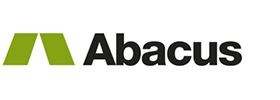Steps to Take in Filing a Flood Claim
Dealing with the aftermath of rising waters damaging your property can be a harrowing experience. Understanding the necessary steps to process your insurance claim following a flood can help manage this stressful situation. The following details explain the steps you should undertake in case of a flood.
Prioritizing Safety
Your first step after a flood should always be to prioritize safety. While it’s necessary to file your claim promptly, it’s crucial to ascertain whether it’s safe to do so. If your property is severely flooded, avoid taking risks, vacate the property, and get in touch with the agent managing your insurance policy.
If the flooding isn’t severe, you can remain on the property while filing your claim. However, ensure electrical disconnection to avoid potential shocks from wet wiring within your home.
Presenting Supporting Evidence
Supporting evidence serves as the basis to validate your insurance claim. The condition of your house and the belongings within your home will be appraised before your insurance claim is approved. Avoid moving any items within your home; an insurance adjuster will inspect the premises.
Taking photos of the current state of your home and the damaged contents with your phone’s camera is advisable. The insurance adjuster will also take pictures of the damage for further assessment.
Filling Out the Claim Form
The claim form is instrumental in recording information about the flood. The form will require your address along with comprehensive details about the damage. It must be duly filled, signed, and dated. Upon insurance claim approval, the restoration of your home can commence.
Immediately get in touch with ASZ International Inc. in Westchester, NY, if you experience flooding. An appointment with our agents, who serve Westchester, NY, will provide essential assistance with your insurance claim.






















































